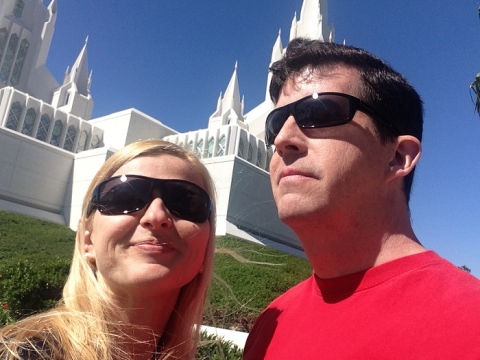

Dr Daniel Whalen
Summary
I am a Senior Lecturer in Cosmology at the Institute of Cosmology and Gravitation (ICG),which I joined in 2016. My research group and I develop supercomputer models of the formation of the first stars, supernovae, and supermassive black holes in the Universe. Our simulations have laid the groundwork for hunting for primeval transients and quasars with the next generation of telescopes in the coming decade, such as the James Webb Space Telescope (JWST), Euclid and the Extremely Large Telescope (ELT). I am a member of the Euclid Consortium and the Royal Astronomical Society. I am also a Higgs Affiliate at the Higgs Centre for Theory at the University of Edinburgh.
Biography
I graduated from Brigham Young University with a BSc in Physics and obtained my Ph.D. in physics at the University of Illinois, Urbana-Champaign. I was then a Postdoctoral Fellow at Los Alamos National Laboratory before being being awarded the McWilliams Fellowship at Carnegie Mellon University. I returned to LANL as a Research Scientist before being appointed as deputy group leader at the Institute of Theoretical Astrophysics at Heidelberg University in 2014. Most recently, I was the Ida Pfeiffer Professor at the University of Vienna in 2019.
Research interests
My main research interests are the evolution of primordial quasars and the birth and evolution of the first supermassive black holes. Over 300 quasars powered by billion solar-mass black holes have now been discovered at redshifts z > 6, less than a billion years after the Big Bang. How such massive black holes form by such early epochs has severely challenged current theories of cosmological structure formation. My research group and I are modelling all stages of the evolution of primordial quasars: the formation of supermassive primordial stars soon after cosmic dawn 100 - 200 million years after the Big Bang, their collapse into 100,000 solar-mass black holes, and their subsequent growth into Billion solar-mass black holes by z ~ 7. We are also deriving synthetic observables for these quasars in the near infrared (NIR) and radio to evaluate their prospects for detection by JWST, Euclid, WFIRST and the Square Kilometer Array (SKA).
Teaching responsibilities
I am the unit coordinator and developer of Advanced Computational Techniques, a level 7 module for fourth year Master students. I also co-developed the Computational Physics II module and am a lecturer in Modern Astrophysics. I currently supervise three PhD students and one Master student on a variety of computational projects.
Research outputs
2025
Euclid and Roman with JWST Could Reveal Supermassive Black Holes at up to z ~ 15
Latif, M. A., Whalen, D.
23 Aug 2025, In: The Astrophysical Journal Letters
Research output: Article
The evolution of rotating supermassive Pop III stars on the main sequence
Nandal, D., Buldgen, G., Whalen, D. J., Regan, J., Woods, T. E., Tan, J. C.
1 Aug 2025, In: Astronomy and Astrophysics
Research output: Article
Euclid. I. Overview of the Euclid mission
Collaboration, E., Mellier, Y., Barroso, J. A. A., Achúcarro, A., Adamek, J., Adam, R., Addison, G. E., Aghanim, N., Aguena, M., Ajani, V., Akrami, Y., Al-Bahlawan, A., Alavi, A., Albuquerque, I. S.,
1 May 2025, In: Astronomy and Astrophysics. 697, 94p., A1
Research output: Article
Abundant water from primordial supernovae at cosmic dawn
Whalen, D. J., Latif, M. A., Jessop, C.
1 May 2025, In: Nature Astronomy. 9
Research output: Article
Radio signatures of a massive black hole in GHZ9 at z ∼ 10
Latif, M. A., Whalen, D.
1 Mar 2025, In: Monthly Notices of the Royal Astronomical Society. 537, 4, p. 3448–3452
Research output: Article
Radio emission from little red dots may reveal their true nature
Latif, M. A., Aftab, A., Whalen, D., Mezcua, M.
6 Feb 2025, In: Astronomy and Astrophysics
Research output: Article
2024
Halo mergers enhance the growth of massive black hole seeds
Prole, L. R., Regan, J. A., Whalen, D. J., Glover, S. C. O., Klessen, R. S.
13 Dec 2024, In: Astronomy and Astrophysics. 692, 10p., A213
Research output: Article
The Evolution of Accreting Population III Stars at 10-6- 103 M⊙
Nandal, D., Zwick, L., Whalen, D., Mayer, L., Ekstrom, S., Meynet, G.
25 Sep 2024, In: Astronomy and Astrophysics. 689, 10p., A351
Research output: Article
Radio emission from high-redshift active galactic nuclei in the JADES and CEERS Surveys
Latif, M. A., Aftab, A., Whalen, D.
3 Jun 2024, In: The Astronomical Journal. 167, 19p., 251
Research output: Article
How Population III supernovae determined the properties of the first galaxies
Chen, K., Tang, C., Whalen, D., Ho, M., Tsai, S., Ou, P., Ono, M.
20 Mar 2024, In: The Astrophysical Journal. 964, 1, 12p., 91
Research output: Article
